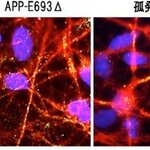Neuroscience

Doctors have used drugs to induce general anesthesia in patients undergoing surgery since a medical doctor became a legitimate profession in the mid-1800s. But little has been known about how these drugs create such a profound loss of consciousness. We don't understand why aspirin works either, but it does. Yet the search for answers about the brain is ongoing.
Anesthesiologists now rely on a monitoring system that takes electroencephalogram (EEG) information and combines it into a single number between zero and 100. However, that index actually obscures the information that…

In President Obama's most recent State of the Union address, he mentioned neuroscience three times. One was a stated commitment to ensure top-quality mental healthcare for returning soldiers. One was the reference to the effect of early education on child learning and performance (I know it's a stretch, but I'm counting it. They aren't learning with their livers.) And third was a reference to brain mapping that could "unlock the answers to Alzheimer’s". A short time later, the President proposed a new, ambitious federal Brain Activity Map project. You may question many of the President's…

A group of progenitor cells in the inner ear that can become the sensory hair cells and adjacent supporting cells that enable hearing have been identified, a potential breakthrough for people suffering from hearing loss due to damaged or impaired sensory hair cells, according to a paper in Development.
The inner ear is a highly specialized structure for gathering and transmitting vibrations in the air. The auditory compartment, called the cochlea, is a snail-shaped cavity that houses specialized cells with hair-like projections that sense vibration, much like seaweed waving in the ocean…

A new paper in the Journal of Pediatrics
says low-birth-weight babies with a particular brain abnormality are at greater risk for autism, and it could provide a signpost for early detection of the poorly understood disorder.
The authors found that low-birth-weight newborns were seven times more likely to be diagnosed with autism later in life if an ultrasound taken just after birth showed they had enlarged ventricles, cavities in the brain that store spinal fluid.
They reached that conclusion by analyzing data from a cohort of 1,105 low-birth-weight infants born in the mid-1980s.…

In "The Descent of Man" (1871), while contemplating how humans learned to speak, Charles Darwin speculated that language might have had its origins in singing, which "might have given rise to words expressive of various complex emotions."
Since then, numerous researchers have believed that that Darwin was on the right path and a new group says the balance of evidence now suggests that human language is a grafting of two communication forms found elsewhere in the animal kingdom: first, the elaborate songs of birds, and second, the more utilitarian, information-bearing types of expression seen…

Researchers have successfully modeled using both familial and sporadic patient-derived induced pluripotent stem cells (iPSCs), and revealed stress phenotypes and differential drug responsiveness associated with intracellular amyloid beta oligomers in
Alzheimer's disease
neurons and astrocytes.
The researchers generated cortical neurons and astrocytes from iPSCs derived from two familial AD patients with mutations in amyloid precursor protein (APP), and two sporadic
Alzheimer's disease
patients. The neural cells from one of the familial and one of the sporadic patients showed endoplasmic…

Imagine that you’re a young rat. You’re in the woods, doing
rat things among the dead foliage. Suddenly, off to your left, you hear a sound
that you've never heard before. It’s loud, it’s strange, and it’s… rattley.
The brain has a few jobs to do in a short amount of time.
First it has to turn the sound into a neural stimulus, digesting the sound into
its component parts—frequency, loudness, harmonics, modulations and gaps—before
it can really be comprehended. Then, the signal has to be delivered to the
areas of the brain that will help identify the sound and determine if it’s a…

By recording the automatic brain wave responses of 100 school-aged children to speech sounds, researchers found that the very best readers encoded the sound most consistently while the poorest readers encoded it with the greatest inconsistency.
Decades of research from laboratories worldwide have shown that reading ability is associated with auditory skills, including auditory memory and attention, the ability to rhyme sounds and the ability to categorize rapidly occurring sounds.
Presumably, the brain's response to sound stabilizes when children learn to successfully connect sounds with…
Can you read minds?
No, you cannot, but with some fluorescent protein and a tiny microscope implanted in a rodent's head, Stanford scientists have come close.
Their technique can observe hundreds of neurons firing in the brain of a live mouse, in real time, and they have linked that activity to long-term information storage. The researchers first used a gene therapy approach to cause the mouse's neurons to express a green fluorescent protein that was engineered to be sensitive to the presence of calcium ions. When a neuron fires, the cell naturally floods with calcium ions. Calcium stimulates…

Macular teleangiectasia (MacTel) is a progressive idiopathic form of retinal degeneration that occurs in adulthood, and is caused by a number of factors including diabetic retinopathy, hypertension, venous occlusion, inflammatory diseases, and blood disorders (Yannuzzi et al., 2006) (Shen et al J Neurosci 32:15715-15727).
MacTel causes blindness through the progressive loss of photoreceptors (Ooto et al., 2011); a pathology that is associated with the local (type 1) or widespread (type 2) vascular aberrations in the retina. These vascular aberrations include vascular dilation,…